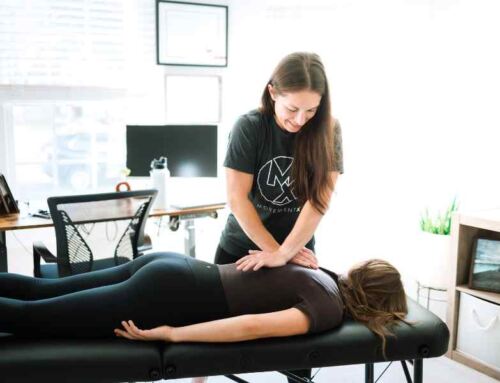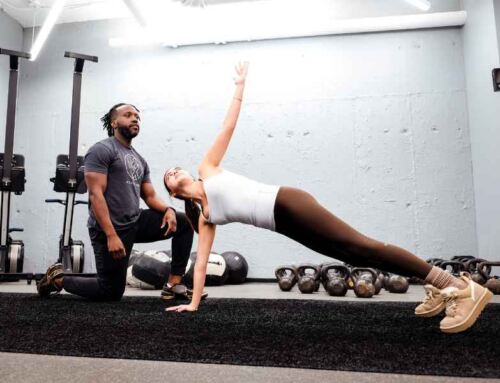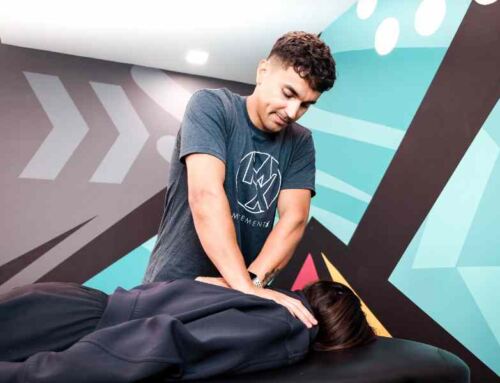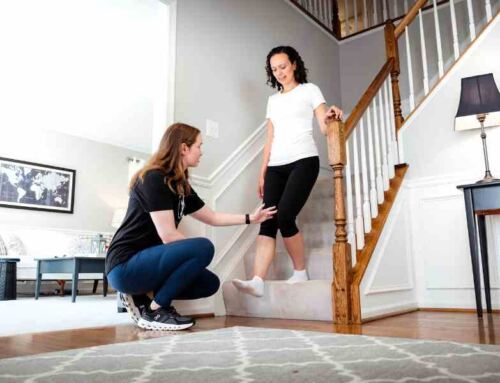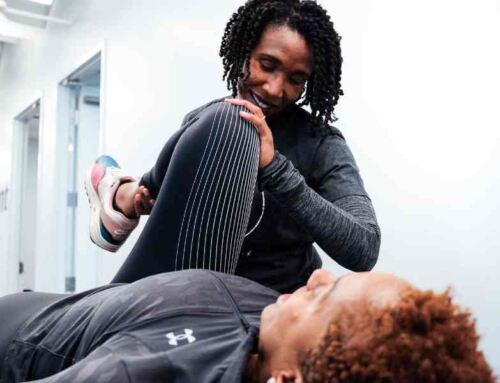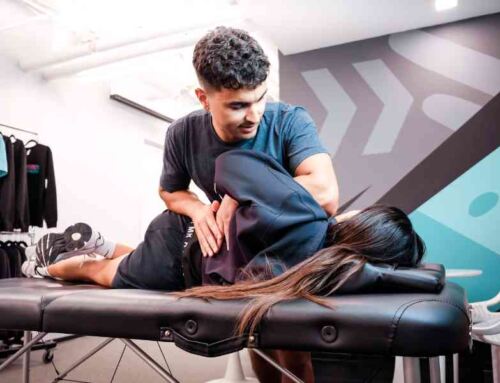5 Essential Exercises for Neck Pain Relief: A Physical Therapist’s Guide
Neck pain is one of the most common complaints treated by physical therapists – In fact an estimated 54% of people experienced neck pain in the last 6 months. Unfortunately, modern life isn’t kind to our necks with factors like older age, high-demand jobs, and low work and social supports all shown to correlate with an increased risk of neck pain.
The good news is that for many people with neck pain there is a good prognosis, with 45% experiencing mild problems and a rapid recovery. By addressing the underlying issues, we can speed this process along and reduce the risk of future neck pain. Here are some PT-approved exercises:
Suboccipital Self-Massage
Oftentimes, people will experience neck pain at the top of the neck which can sometimes radiate into the head. This is caused by the first few joints of the neck – what we call the upper cervical spine – or the muscles that correspond to these joints getting stiff or irritable. One way of alleviating these symptoms is to perform self-massage to the area using your fingers. This helps to move those unhappy joints and desensitize those sore muscles.
The easiest way to do it is to lay on your back with your hands behind your head. Interlace your fingers so that you’re in the classic “leaning back in on the beach pose”, and then place the thumbs right where the bottom of the head meets the top of the neck. This area is usually tender, so it shouldn’t be too hard to find. Use the thumbs to gently dig into the muscles in that area at a level that feels both comfortable and productive.
Work on this area for 3-5 minutes, or longer if it’s feeling good. This exercise can be done daily, or even multiple times per day to improve symptoms in this area.
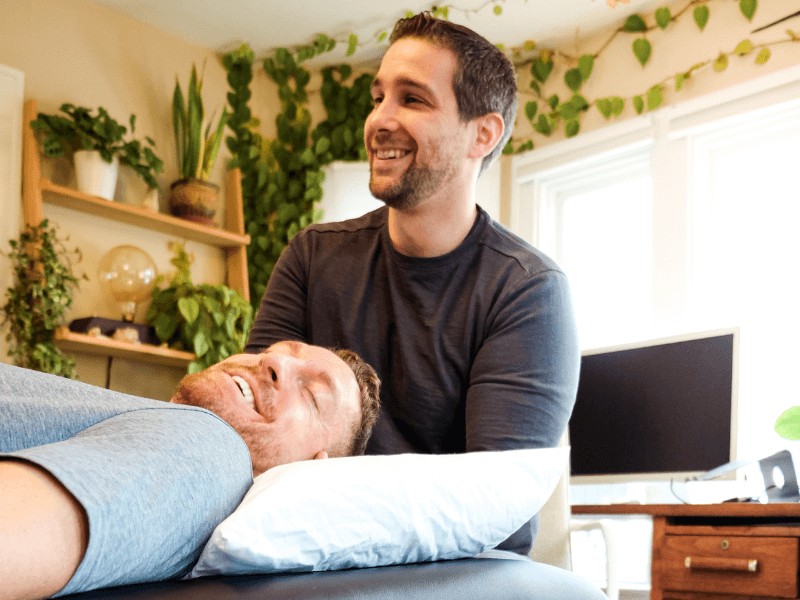
Assisted Neck Rotation
Moving all the way down the neck, we can also increase mobility in the area where the neck meets the upper back. This area sees its fair share of pain and dysfunction because it’s a transitional zone. At this point in our spine, the curvature of our spine switches from a lordosis (a backwards bend) in the neck to a kyphosis (a forward bend) in the upper back. Because of the transition, the neck is stressed a bit more in this area. This is also where many of the muscles that connect the shoulders and arms to the body attach, further increasing the load on this region. Fortunately, it’s an easy area to stretch throughout the day if it becomes bothersome.
Start by taking one hand and reaching around the front of the neck and getting your fingertips to the base of the neck (if you’re using your right hand, it should be on the left side of the neck reaching back, or vice versa). Feeling with your fingertips, find the largest bump on the base of the neck. For most people this will be the bottom vertebrae in the neck. Pull down with the hand on the neck; because you’re reaching across the body, this will also cause rotation at the bottom of the neck. Then look to the side that has the hand on it (so if we’re reaching up with the right hand, you’ll turn your head to the left). Go as far as you can comfortably and hold for 1-2 seconds. Repeat this 10 times, then switch and do it 10 times on the other side.
This exercise can be done easily throughout the day while sitting at a desk, stuck at a traffic light, or nearly any other time to alleviate symptoms and improve mobility in the bottom part of the neck.
Upper Back Extension on a Foam Roller
When it comes to exercise to alleviate neck pain, the research is pretty clear: we also need to include exercise to address the upper back to optimize our results. This is because a stiff or weak upper back doesn’t put the neck in an ideal position to do its job. If the neck has to compensate for the upper back in addition to doing its own job, it’s going to get cranky, and it’s going to let us know about it.
Using a foam roller or a rolled-up towel we can stretch out the upper back and keep the neck functioning optimally. Lay whatever you’re using on the ground, and lay down on it perpendicularly, with the towel or roller contacting around the bottom of the shoulder blades. Use the hands to cradle the head and keep the neck relaxed, then lean back to extend the spine. Bonus points for breathing out as you lean back to get the air out of the lungs and let the ribs move as much as possible. Hold the bottom position for 3-5 seconds and then repeat for a total of 10 repetitions.
This exercise really can’t be overdone, especially if you’re someone who spends a good deal of time sitting throughout the day. You can progress by increasing the number of reps to 15 or 20, or by doing more that one set each day. This exercise should be done daily.
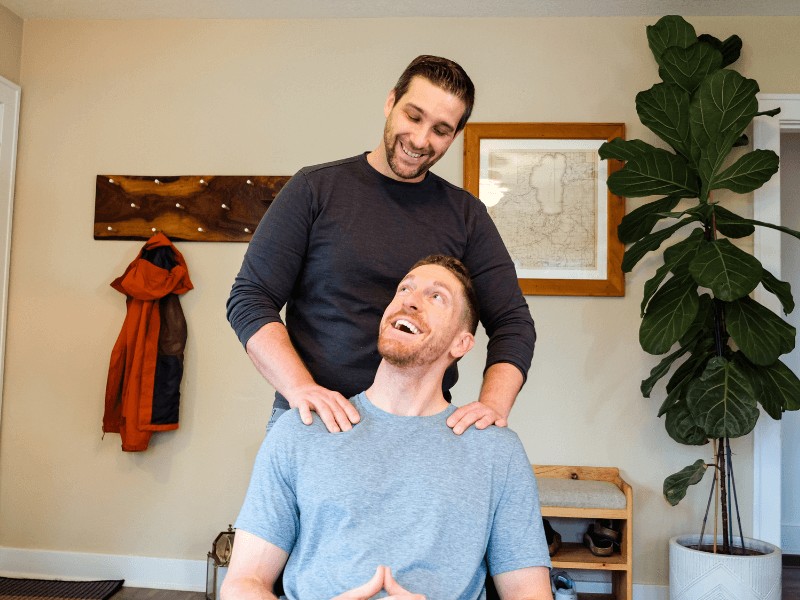
Chin Tuck and Lift
While stretching and self-massage can be powerful tools for alleviating neck pain, the ultimate goal is to reduce our risk of experiencing neck pain in the future. Research shows that the best way to accomplish that it to build strength in the neck so that it’s resilient enough to take on all of life’s challenges. A simple exercise to improve the strength and endurance of our neck is the humble chin tuck and lift.
This exercise will target the musculature on the front of the neck: the longus colli, longus capitis, sternocleidomastoid, and the scalenes group to name a few major players. Lay on your back with your head flat on the ground – ideally without a pillow. Start by gently nodding the head and tucking the chin without lifting your head off the ground. You can think of the back of your head sliding on the ground instead of lifting off if you have trouble keeping it down. After you’ve achieved a good tuck, then lift the head off the ground about 1 inch. Think of your face going towards the ceiling and lifting up, not bending the chin down to the chest. Once you’re in this position, hold for 1-2 seconds before returning the head to the ground.
The goal is to build up to 10 repetitions of 10 seconds. Start with a 10 repetitions of 1-2 seconds, and if that feels easy, build up by 1-2 seconds each day until you’re at the goal. This exercise can be done daily to improve your strength and endurance as quickly as possible.
Shoulder “W”
Just like with mobility exercises, addressing the upper back with strengthening exercises can have a profound impact on improving pain and function in the neck. This is because many of the same muscles – the trapezius and levator scapulae, for example – attach at both the joints of the neck and at the shoulder blades. So by working the shoulder girdle, we’re directly activating muscles of the neck, and indirectly causing the smaller stabilizing muscles to activate as well.
One very accessible exercise for the upper back is the “W”. All you’ll need is a small, rolled-up dish towel. Lay on your stomach with the towel under your forehead. This will keep your nose from getting squished. Then bring your hands to the sides of your head; your thumbs should be at about the level of your eyes. Start the movement by squeezing the shoulder blades towards each other and down as if you were trying to pinch something in between them. Then lift the elbows and hands off the ground, trying to get the back of the wrists as high as you can. Hold this position for 1-2 seconds, then return the arms to the ground and relax the shoulders. Repeat this for 10 total repetitions to start.
Similar to the chin tuck, the goal is to build up to 10 reps of 10 seconds, but you can start with shorter hold times if needed and then build up with 1-2 more seconds if it feels too easy. This can be done daily to strengthen the shoulder girdles and alleviate neck pain.
Conclusion
These exercises are one piece to the puzzle of alleviating neck pain. By working on mobility, strength, and endurance we improve the capacity of the neck to handle all the rigors of everyday life. A truly wholistic plan for the neck would also include lifestyle and ergonomic interventions to put your neck in the positions that will feel the best over the long-term, and if needed, consultation with a skilled physical therapist to address any individual issues and provide hands-on care.
About the Author
Dr. Jessica Crowder is a physical therapist based in Orange County, CA. She treats orthopedic conditions, sports injuries, chronic pain, and post-operative care. Jessica Crowder specializes in treating athletes from CrossFit, weightlifting, soccer, running, and all-round fitness enthusiasts. As a former D1 NCAA soccer player and current CrossFit athlete herself, Dr. Jessica Crowder has made a career of embodying optimal functional movement and enabling others to do the same.



